Porsche, Ferrari, Lamborghini, McLaren… they all want to have best hardcore sports car. We’ve tested them all to determine which one takes the accolade
Welcome to true-blue petrolhead territory. This is where incredible outright grip and pace, vivid driver engagement and thrill, supreme handling poise and track-day-ready specification and purpose all abide. You’ll like it here.
The cars we’re saluting are genuine immortals of speed and excitement. Some of them are so exciting, in fact, that they don’t really belong on the road at all — although all are road-legal with numberplates. But all are cars you’d be in the market for if you wanted a money-no-object track-day tool to enjoy through the summer months — and something you could drive home in afterwards.
Here, we rank both current production machines as well as those that have gone off sale but have yet to be replaced; because these kinds of cars don’t come along often, don’t stay around for long, and the best remain relevant long after they’ve disappeared from the sales brochures.
To chart 10 of these cars without counting those that are technically defunct would be to deny some amazing driver’s cars the recognition they’re undoubtedly due. But which are due the most?
1. Porsche 911 GT3
The supreme hardcore focus, track-day hardiness, handling brilliance, driver involvement and performance value of the Porsche 911 GT3 make it a car that absolutely demands the highest recognition we can give. It has become the default answer to any number of questions a newly inducted petrolhead might ask about which car they should buy to maximise return on investment for speed, excitement and driver reward. The only fly in the ointment is that, these days, everyone knows it — and so GT3s have become highly sought after.
This isn’t a car that advertises its brilliance particularly loudly on paper. The car’s 493bhp 4.0-litre flat-six makes it look a bit outgunned in this company, and even in Porsche’s own model range there are several 911s with greater claimed power and outright accelerative performance. But no rival has the GT3’s blend of pace, grip, balance and usefully positioned weight; none has the all-round dynamic precision and outstanding controllability needed at once to set blistering laptimes and set your imagination racing on track. And few seem as well suited to road use once the pitlane has closed.
Through three generations and as many mid-cycle revisions, the GT3 has got better and better since the very first one appeared in 1999. Counting some very closely related GT3 derivative offshoots, it has won Autocar’s annual Britain’s Best Driver’s Car contest four times. Porsche 911s of various types have won it seven times. For the record, no other sports car in three decades of competition has won it more than twice.

Save money with new 911 deals from What Car?
2. McLaren 600 LT
Regular readers of Autocar might be somewhat surprised to see the McLaren 600 LT slide into second place on this list after being crowned Britain’s Best Driver’s Car for 2018. Make no mistake, the McLaren is a visceral, highly engaging and beautifully balanced hardcore sports car that works sublimely on both road and track; but the fact it doesn’t pip the Porsche here just goes to show how highly we still regard the 911 GT3.
The 600 LT is based on the fantastic 570S, and is the third ‘Longtail’ model launched by McLaren Automotive. Power has been hiked by 30bhp to 592bhp courtesy of a freer-breathing exhaust, the springs are significantly stiffer, its dampers have been retuned, and aggressive new body work now sees it generate even more downforce at speed. As with any track-honed special, it’s been stripped out too. In its lightest spec (no air-con, no nose lift, no stereo etc) it weighs 1247kg dry.
The resulting package really is something special indeed; one that steers with the tactile sweetness and accuracy that McLaren has become renowned for, while also now being faster, grippier and more aurally rewarding than ever before. Top work, McLaren.
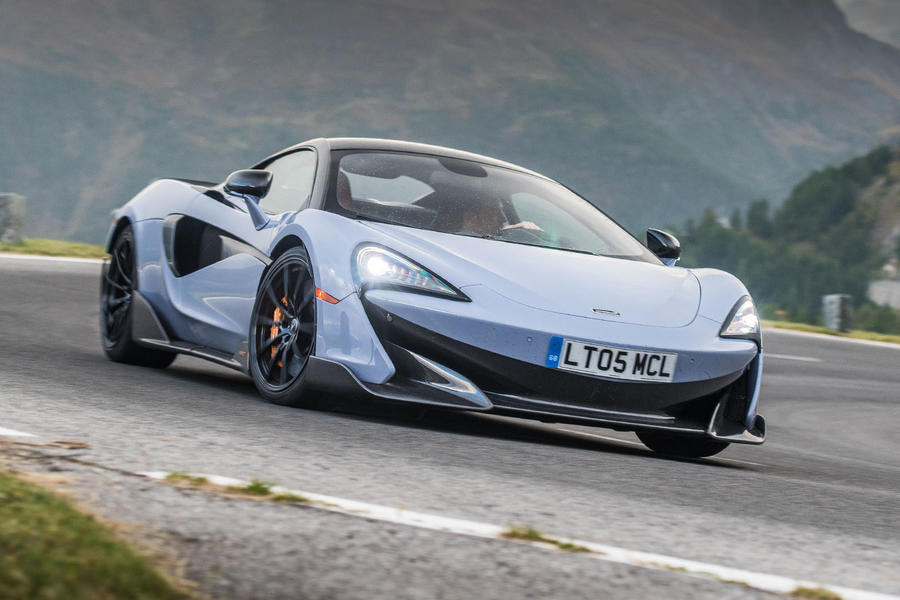
Save money with new 570S deals from What Car?
3. Ferrari 488 Pista
Here are the headline stats: 710bhp, 568 lb ft, 1359kg, zero to 62mph in 2.85sec and a price tag of £252,765 – before options. In short, the 488 Pista is a truly serious piece of kit. And an effective one, to boot.
At our Britain’s Best Driver’s Car 2018 shoot out, the successor to the phenomenal 458 Speciale was the fastest car to lap the Anglesey Coastal Circuit, with a time of 1min 11.4sec – 1.7sec quicker than the McLaren 600 LT.
This is a car that’s seemingly defined by immediacy. Turn the wheel and the front end responds with the agility of a pursued hare. Pull one of the steering column-mounted columns and the seven-speed dual-clutch automatic ‘box will swap cogs faster than you can blink. And if you’re brave enough to extend all of the throttle’s travel, you’ll find yourself catching up on the horizon at an alarming rate of pace. Given the Pista’s immence potency, it’d be easy to write it off as being a handful on track, but the reality is that it’s one of the most balanced, adjustable and flattering cars you can buy.
That it’s not quite as adept at making the most of its abilities on the road as the road as the McLaren 600 LT sees it slide into third place here. But it’s an incredibly narrow gap that separates very differently tuned rivals.
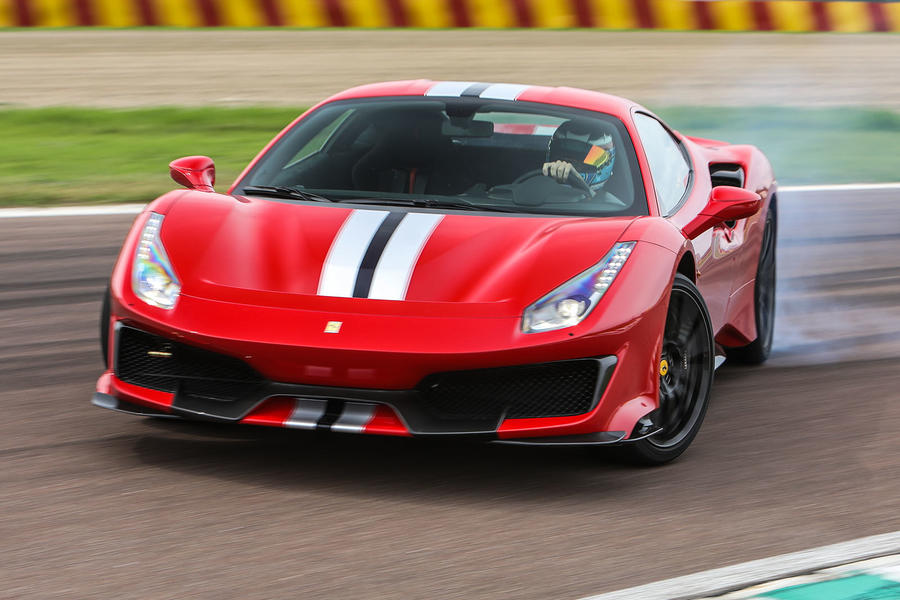
Save money with new 488 deals from What Car?
4. Porsche 911 GT2 RS
This is where the world’s best-loved sports car gets a bit silly. There has never been a faster or more powerful 911 than the 690bhp, 211mph GT2 RS. This uber-911 seeks to combine the involving track focus of the GT3 RS with a level of torque and sheer brute force performance that even a 911 Turbo S couldn’t equal, with the latter channelled through one driven axle rather than two. It’s quite a mission statement — and, if only by Porsche’s own high standards, it’s not entirely successfully delivered upon.
But such a tiny detail needn’t necessarily come between any GT2 RS owner and the appreciation of what remains a staggeringly compelling driver’s car, because the GT2 RS is remarkably good at keeping its ridiculousness largely in check most of the time, unleashing it only when you want it to. The car uses 21in rear wheels and 325-section tyres to transmit its venom to the Tarmac. It has carbon-ceramic brakes as standard and a suspension set-up even more specialised than that of a GT3 RS.
And yet, unlike almost any other 911 GT2 there has ever been, it knows how to behave itself when the occasion calls for it. At other times? It’s ballistic; not without turbo lag (how could it be?) but still remarkably responsive and linear, and as fast as a hypercar in full cry. It’s also approachable and obedient on a track, for the most part. It doesn’t feel like it’s hardwired into your synapses like a GT3 and doesn’t involve to quite the same extent. Even so, there’s nothing else quite like it.
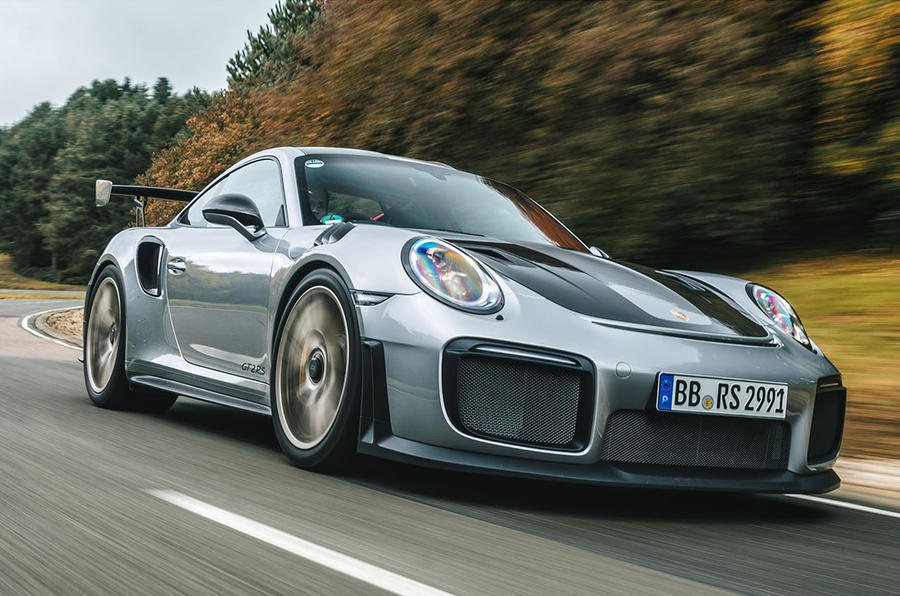
Save money with new 911 deals from What Car?
5. McLaren 675 LT
Ranking here because, just like the 911 GT2 RS, it has yet to be directly replaced, the McLaren 675 ‘Longtail’ was a coming of age for its British originator in more ways than one. It was the first of McLaren’s supercars to begin to show us evidence of a key realisation from Woking: that keen drivers ultimately care at least as much about how they’re going fast as how fast they can ultimately go.
Having ticked the second box pretty emphatically with the P1 hypercar, McLaren catered more to the first with the 675 LT — and quite successfully so. The firm found an extra 25bhp for the car’s 3.8-litre turbo V8 engine in addition to 650S trim, but added bodywork that created 40% more downforce, saved 100kg of kerb weight, stiffened the car’s suspension and quickened its steering rack.
But, above all else, it retuned the 650S’s torque vectoring system and electronic aids to allow its handling to come alive more readily on circuit, and rebalanced its grip levels to give it the handling agility, poise and adjustability of a really immersive mid-engined driver’s car. It’s a monster of track machine, too: thoroughly challenging and rampantly fast. But, perhaps most importantly of all, this was the first of McLaren’s road car crop that could also be really good fun.
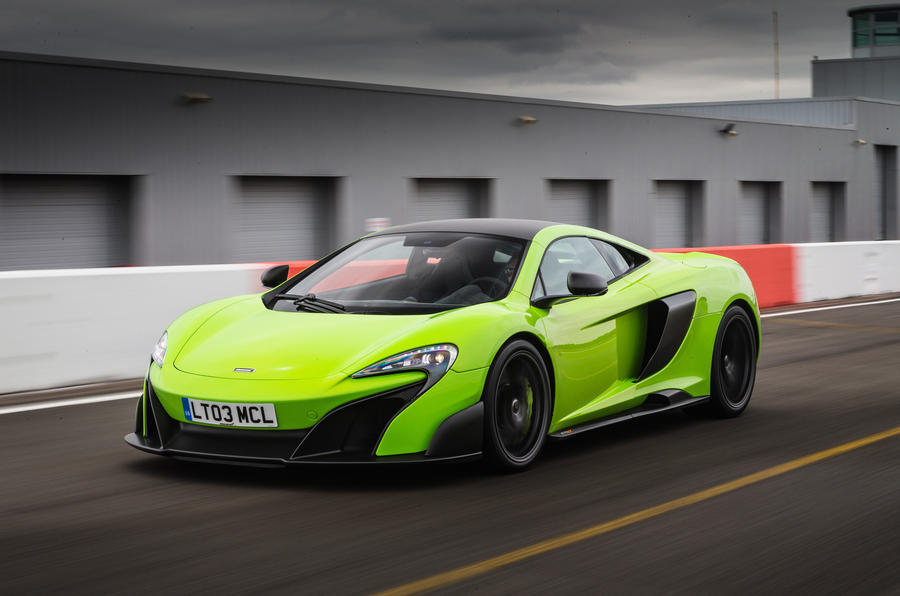
Save money with new 650S deals from What Car?
6. Lamborghini Huracán Performante
Having until quite recently been the fastest production car in history to lap the Nürburgring Nordschleife circuit, the Lamborghini Huracán Performante is also the fastest car we’ve ever timed around our benchmark dry handling circuit around which every performance car that’s subject to a full Autocar road test is driven.
That makes the 630bhp, extra-lightweight, four-wheel drive Lambo quicker, corner by corner, than a McLaren P1, a Porsche 918 Spyder and a Bugatti Veyron Supersport; that’s proof of how much grip, incisiveness, poise and precision Sant’Agata has engineering into a Huracán chassis, which wasn’t class-leading in any of those respects in standard form. Very little will prepare you for the baleful, red-blooded howl of this car’s naturally aspirated V10 engine as it rips past 8000rpm, or the savagery of every upshift of its twin-clutch gearbox.
In an era of turbocharged opponents, the Huracán’s rapier-sharp engine really is to be embraced and savoured. But, in this Huracán, the handling balance and confidence you’ll unearth once the car’s incredible Pirelli Trofeo R tyres are warmed up can at last approach the same kind of brilliance as the powertrain.
The Huracán has almost unrivalled supercar presence and sense of occasion, not to mention all that bleeding soul. As an object of desire, its appeal is multifaceted; you won’t find better-looking carbonfibre anywhere else in the world. As a driver’s car, it only lacks that last degree of throttle-on poise and interactivity of the best of its rivals.
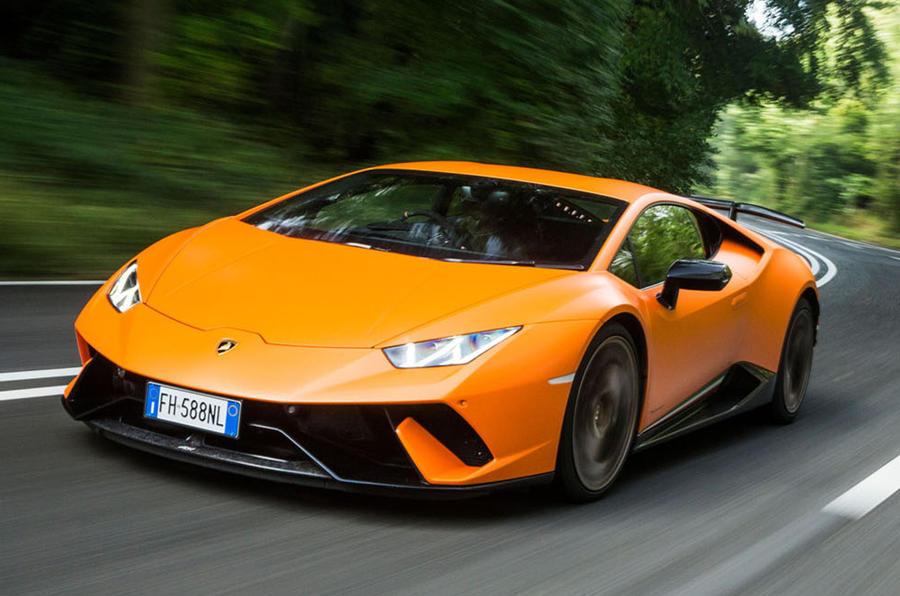
Save money with new Huracán deals from What Car?
7. Lamborghini Aventador SVJ
Mentioning the word ‘jota’ in the company of a well-read supercar aficionado will always produce a wobbly-kneed reaction. The first one was Lamborghini’s test driver Bob Wallace’s pet project to up the performance level of the legendary Miura and to make the car ready for FIA sports car racing. There was only ever one prototype built, and it burnt to a cinder before it could sire a very special limited-edition production run.
The Aventador SVJ is only the second Lamborghini since Wallace’s Miura to wear the ‘jota’ nameplate (which is what the J suffix stands for). It is also a tribute to the firm’s all-important and totally inimitable lineage of big, mid-engined, twelve-cylinder, harem-scarem supercars, which included the Diablo, Murcielago, Countach and Miura – and which is due to be transformed somewhat with the Aventador replacement, since the firm is set to change the recipe of its bigger series-production supercar by adding electrification.
Big, wide, heavy and searingly rapid, this is a car demanding physical effort, bodily compromise and plenty of commitment to drive to its fullest. A cramped and quite dated cabin will test your enthusiasm first; after that, the violence of the car’s full bore gear changes, the savagery of its outright pace and the intensity of the concentration needed to find the limit of its grip level are your next challenges to overcome.Negotiate all, however, and the Aventador SVJ gives a driving experience of almost unmatched rawness and attitude. Wrestling it to a fast lap is a more rewarding experience than you’ll find almost anywhere, in a era in which the business of going fast is being made ever easier.
Like your hardcore thrills physically testing and deliciously old-school in flavour? This Lambo is in a league of one.
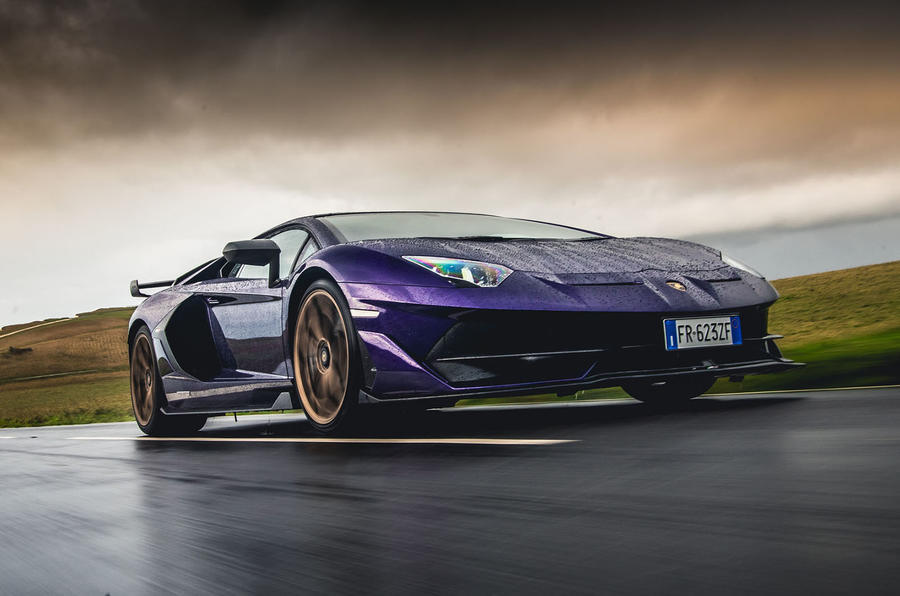
8. Lotus Exige Cup 430
This is nothing less than the quickest street-legal production car that Lotus has ever made. Significantly modified from Hethel’s Sport 380 specification, the Cup 430 has a supercharged V6 engine good for 430bhp and shared with the Evora GT430; but it weighs just 1056kg without fluids, making it good for a claimed 0-62mph sprint of 3.3sec. Top speed is 180mph, in a car that also makes hundreds of kilograms of downforce, so it’s capable of lapping Lotus’s home test track more than a second quicker than the car it replaces.
On road or track, the Cup 430 feels ferociously fast and intensely engaging to a level that no modern Lotus has previously reached. It’s a car without Hethel’s usual preference for a supple, breathing road ride, but it has three-way adjustable dampers and adjustable ant-roll bars so can be set up to your preference. In standard setting, it’s certainly firm enough to test your enthusiasm for it; and its cabin is as tight and frippery-free as Exiges have ever been.
On the track, the car’s handling is little short of magnificent. Such a light car doesn’t punish its mechanicals too hard and can be driven hard lap after lap without showing a hint of wilting under pressure. It’s a driving experience that rewards the investment of effort and commitment with vivid excitement, huge speed and handling that’s supremely agile and balanced — albeit quite scary in wet conditions.
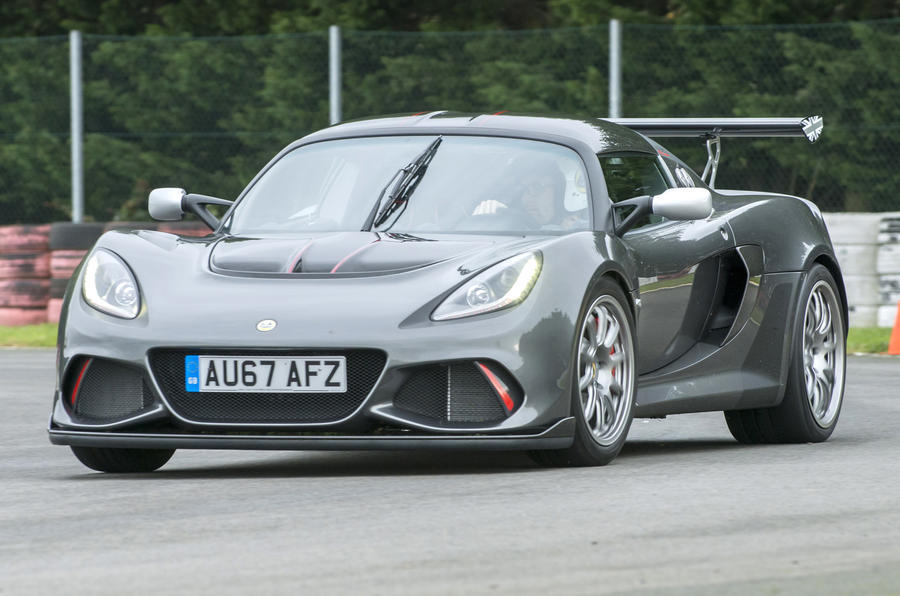
Save money with new Lotus deals from What Car?
9. BMW M4 GTS
Every now and again, the management of BMW’s Motorsport performance division is given licence to go a bit nuts and produce an extra-special limited-series production machine with top-level performance specialism and purpose.
That licence has given us the BMW ‘E30’ M3 Sport Evo, the ‘E46’ M3 CSL and the ‘E90’ M3 GTS over the years. And now it’s given rise to this, the M4 GTS: a very trick version of BMW’s high-performance 4 Series Coupé with a 493bhp water-injected six-cylinder turbocharged engine, carbon-ceramic brakes, fully adjustable coilover suspension, carbonfibre bodywork and a cool £121k pricetag.
Classic front-engined, rear-wheel drive handling balance is the GTS’s dynamic calling card on track. If you catch those Michelin Cup tyres before there’s too much heat in them, the car’s a real hooligan of a drift machine that’ll benignly take angles of attitude you wouldn’t have the confidence to adopt in most cars in this class.
The question marks? Perhaps that six-cylinder engine feels a little bit unworthy of the pricetag, the gearbox isn’t brilliant on the road when you’re not driving the doors off the car and the ride and handling are only as good as the effort you’re prepared to invest in setting it up (the act of which requires a hydraulic lift and a large set of spanners).
On different occasions and tests, the GTS has handled sublimely well at times, but also with alarming skittishness and hyper-responsiveness on the road at other times. It’s a car whose handling only gives back what you’re prepared to put in by way of preparation.
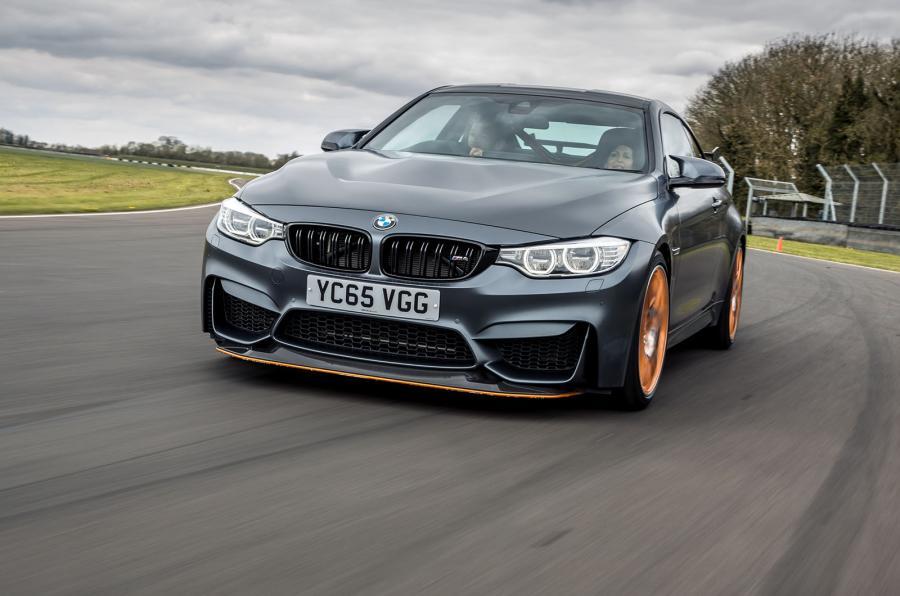
Save money with new M4 deals from What Car?
10. Mercedes-AMG GT R Pro
Carrying more motorsport technology than any production machine in Mercedes-AMG’s history, the GT R was Affalterbach’s big swipe at the golden boy of its near Stuttgart rival: the Porsche 911 GT3. That it exists at all tells you much about AMG’s determination, one day soon, to emerge from the shadows of its world-famous neighbour as a maker of sports cars of equal stature and acclaim.
That the GT R features towards the bottom of this chart, however, and the GT3 at the very top, tells you that there’s still some work to be done before that can happen. But don’t think for a moment that it means the GT R gets everything wrong that the GT3 gets so spectacularly right; they are, in fact, very different cars with very distinct characters. The GT R’s 577bhp V8 engine, for example, has bombastic vocal swagger and supercar thrust that the GT3’s flat-six can’t match.
Like the GT3’s, the GT R’s chassis features rigid-mounted suspension and four-wheel steering. Affalterbach put the car through a wide-ranging respecification program for the 2019 model year, and produced the latest range-topping GT R Pro version with its manually adjustable damper rate, ride height and anti-roll bar settings, its boosted aero kit, its stiffened chassis and its various weight savings.
On the track, the GT R Pro feels significantly more precise in its handling responses, and better controlled in its body movements, than the old GT R. We’ ve yet to try it on the road, either in Europe or the UK; but if it’s as impressive there as it was at Hockenheim, it could well move up this order.
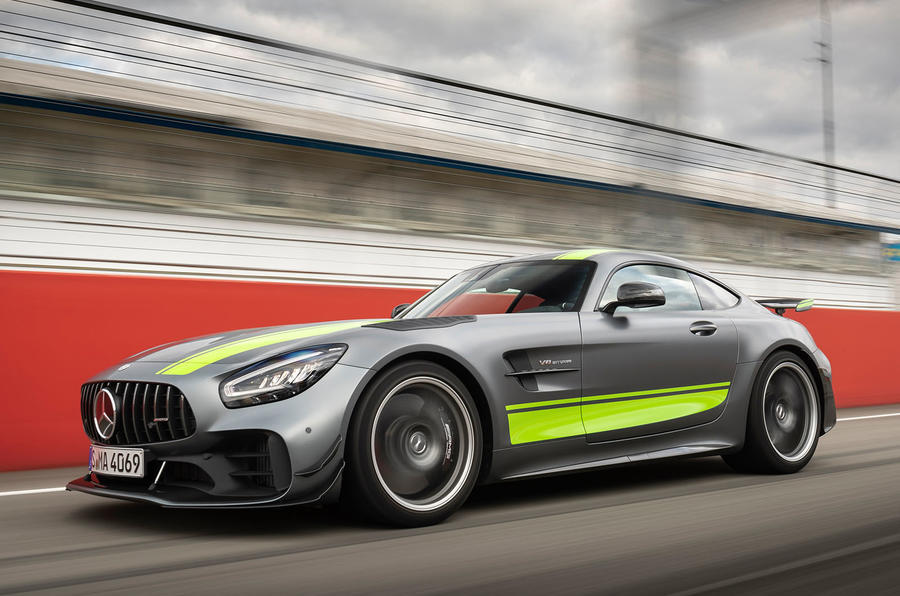
Source: Autocar

